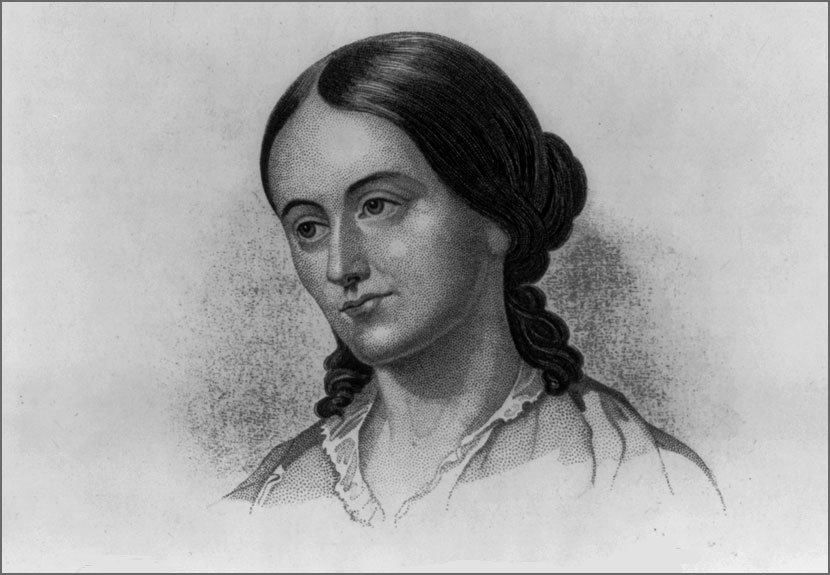Guest blog post by John Matteson, distinguished professor of English at John Jay College of Criminal Justice, recipient of the 2008 Pulitzer Prize for Biography, and author of the recently published The Lives of Margaret Fuller (W. W. Norton).

We still don’t know exactly what they meant to each other.
Before they met, Margaret Fuller went to hear Ralph Waldo Emerson speak multiple times and relished “the atmosphere of his thoughts.” She called him “that only clergyman of all possible clergymen who eludes my acquaintance.” Still, she seemed reluctant to form a friendship, though it’s unclear whether her shyness—unusual for her—arose because he intimidated her or because she feared she would find him wanting. When at last they sat down together at Emerson’s home in Concord, in the summer of 1836, Fuller was still recovering from her father’s death the previous fall. It is almost too easy to conclude that she was looking for another man of substance to fill the gap. This was probably true, but she was also looking for an ally. To help support her orphaned siblings, Fuller needed employment. Few could supply connections like Emerson.
From the outset, electricity crackled between them, alternately repelling and attracting. A man of instinctive distance and reserve, Emerson thought Fuller “carried too many guns” and tacitly predicted, “we shall never get far.” But, fortunately, she stuck to her strong suit: she kept talking. Her conversation, peppered with satiric observations about mutual acquaintances, amused and bewitched him. Her initial visit, arranged to last two weeks, extended to three. Emerson became Fuller’s cheerleader, praising her talent and urging her to write. And, as Fuller had hoped, he more than once helped her find employment; neither her work at Bronson Alcott’s Temple School nor her editing of The Dial would have happened in his absence. However, the blessing was highly equivocal. The Temple School gave her experience and The Dial brought her something like fame. But transcendentalism was never a great moneymaker, and Fuller never received her expected wages for either project. Fuller was attracted to Emersonian thinking because it emphasized the value of mind and soul without seeming to ask much about the possessor’s sex. However, there was a flavor of exploitation in the work she was given, even if Emerson sincerely apologized for the failure of The Dial to repay her efforts.
Both Fuller and Emerson prized unseen reality above the visible, and both believed fervently in the tireless pursuit of self-culture. It must have seemed to observers that a man and a woman could hardly be more likeminded. Yet in their friendship the seemingly minor differences could sometimes trump the grand similarities. For Fuller, genius was a matter of both intellect and emotion; Emerson’s idea of intellect was cool and smooth as marble. Fuller complained that his “light will never understand my fire; [his] clear eye will never discern the law by which I am filling my circle.” She wanted an intimacy of spirit that both Emerson’s status as a married man and his habitual aloofness made it uncomfortable, if not impossible, for him to supply. She arraigned him with “inhospitality of soul.” Emerson wrote that he would like nothing better than “to melt once for all these icy barriers” that stood between them, but the distance proved too great. He told her, “You & I are not inhabitants of one thought of the Divine Mind, but of two thoughts, that we must meet and treat like foreign states, one maritime, one inland, whose trade and laws are essentially unlike.”
Fuller could not excuse his failure to understand her. She asked bitterly, “[W]hen my soul, in its childish agony of prayer, stretched out its arms to you as a father, did you not see what was meant by this crying for the moon . . . ?” “You are intellect;” she later wrote to him, “I am life.” As an affiliation of the mind, their relationship went as far as it could go; as an affinity of two hearts, it never really began. By the time Fuller left New England for New York in 1844, she was transcendentalist no more. During her entire time in Manhattan, she wrote to Emerson only twice.
Nevertheless, Fuller’s death aboard the Elizabeth in July 1850 left Emerson shocked and stunned. In his journals during the months that followed the wreck, he returned to her memory again and again. He collaborated with two of her other closest friends, William Henry Channing and James Freeman Clarke, to write a memoir of her that remains one of the most significant American biographies of the nineteenth century. Perhaps his most fitting tribute to her was his tersest. He said of her passing, “I have lost my audience.”



